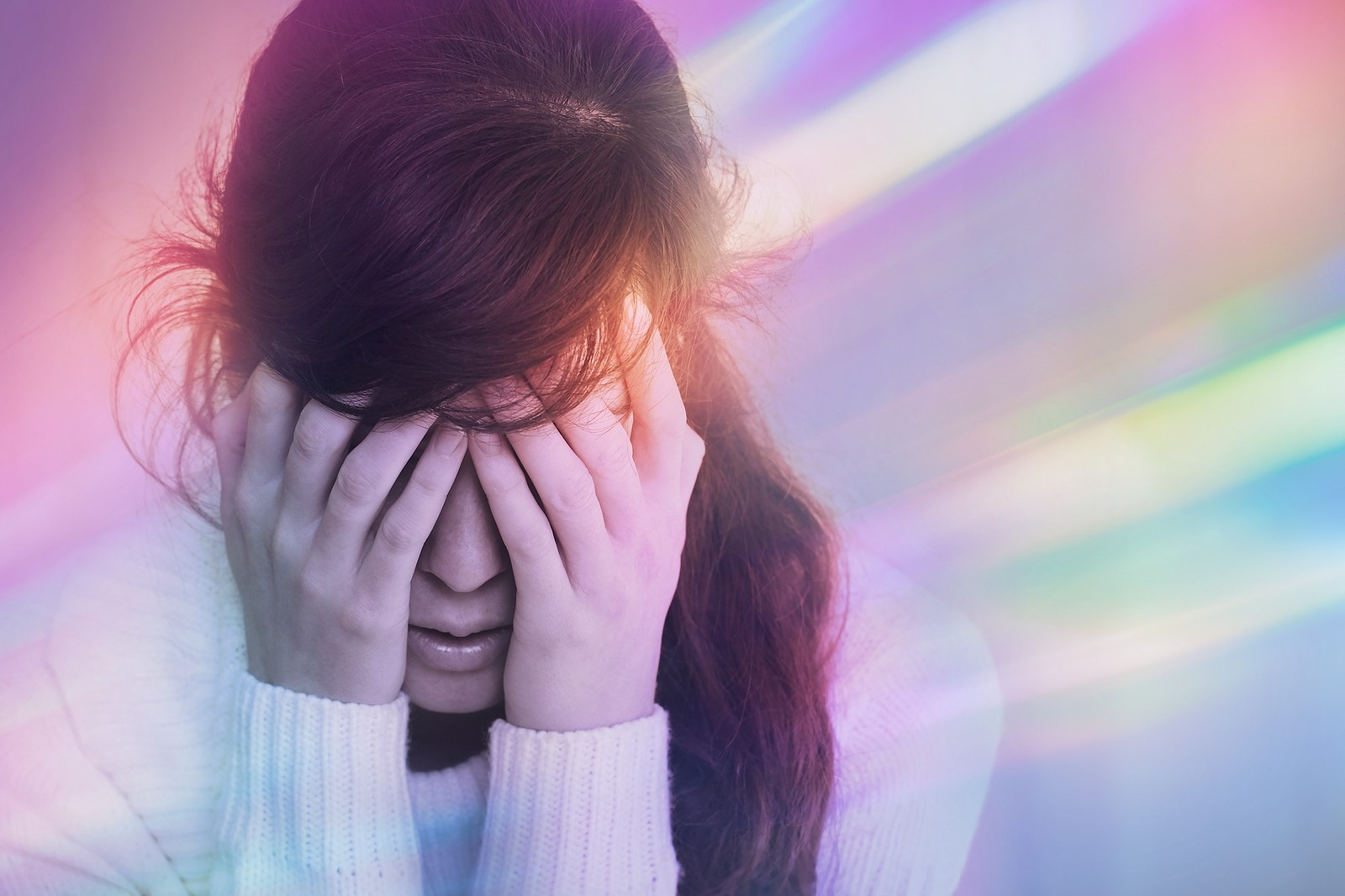
Migraine is a common neurological disorder that causes recurrent headaches. For some people, migraine also includes an aura which is a set of sensory symptoms that occur before the headache begins. One of the most common auras is seeing spots or flashes of light. If you experience migraine with aura, you may be wondering if seeing these spots in your vision is serious. In most cases, it is not. However, it is important to seek medical attention if the spots turn into a temporary loss of vision.
What is a Migraine Aura?
A migraine aura is a group of symptoms that appear before or during a migraine episode. Auras can create problems with vision, feeling, and speech. According to the American Migraine Foundation, between 25 and 30 per cent of migraine sufferers have an aura. Because an aura can occur prior to the onset of a migraine episode, it is frequently used as a warning indication. Auras usually start around an hour before the discomfort of migraine and linger for less than 60 minutes. (Seladi-Schulman 2020)
Symptoms of Migraine With Aura
Temporary visual or other disruptions that occur before additional migraine symptoms such as strong head pain, nausea, and sensitivity to light and sound are common migraine aura symptoms. The majority of persons who suffer from migraine with aura experience transitory visual signs and symptoms that begin in the center of their field of vision and extend outwards. Blind spots (scotomas) that are occasionally delineated by simple geometric designs, shimmering spots or stars, zigzag lines that gradually float over your field of vision, changes in vision or vision loss, and bursts of light are examples of these. Numbness, generally felt as tingling in one hand or on one side of your face that may travel slowly along a limb, speech or language trouble, and muscular weakness are all transient symptoms linked with migraine aura. (Mayo Clinic, 2021)
Causes of Migraine with Aura
Scientists aren’t sure what causes migraines, but they believe that numerous brain chemicals are involved. A surge of nerve cell activity sweeps over your brain, triggering your trigeminal nerve, according to this notion. This results in the release of a number of neurotransmitters, a change in blood vessel size, the release of additional neurotransmitters, and, eventually, inflammatory response and pain. Experts believe the aura is caused by an electrical wave passing through the portion of your brain that handles sensory inputs. Migraine is a disease that typically runs in families. It usually starts in childhood and worsens during puberty. Migraines affect more adult women than males, despite the fact that they affect more boys than girls. You’ll have less as you become older, and they’re less prevalent around 50. (Taylor)
Treatment & Prevention of Migraine With Aura
When aura symptoms appear, it’s a good idea to go into a dark, quiet area and close your eyes. Using a cold compress on the back of your neck or on your forehead can also help relieve migraine discomfort. A migraine with aura, like other forms of migraine, is treated with a mix of medicines. Medications for both symptom prevention and treatment are included. Antidepressants, such as amitriptyline, blood pressure medicines, such as beta-blockers or calcium channel blockers, and anti-seizure drugs, such as topiramate, are examples of preventive medications that may help prevent migraine episodes.
Medications for symptom relief might assist to lessen the intensity of a migraine episode that is about to happen. They’re usually taken as soon as an aura’s symptoms appear.
Over-the-counter pain treatments such as acetaminophen (Tylenol) or ibuprofen (Motrin, Advil), triptans such as rizatriptan and sumatriptan, dihydroergotamine, and anti-nausea drugs are examples of these medications. Other migraine treatment options are being studied as well. Biofeedback, acupuncture, and relaxation methods are examples of these. (Seladi-Schulman 2020)
Most people who experience migraine aura have only a few attacks and do not go on to develop migraine without aura. However, for some people, migraine with aura can be an early warning sign that they will later develop migraine without aura. There is no cure for migraine, but there are treatments that can help relieve symptoms. If you think you are experiencing migraine with aura, talk to your doctor about what treatments may be right for you.
Works Cited
Seladi-Schulman, Jill. “Migraine Aura: Causes, Symptoms, Treatment & More.” Healthline, Healthline Media, 16 Mar. 2020, www.healthline.com/health/migraine-aura#what-is-it.
“Migraine with Aura.” Mayo Clinic, Mayo Foundation for Medical Education and Research, 2 July 2021, www.mayoclinic.org/diseases-conditions/migraine-with-aura/symptoms-causes/syc-20352072#:~:text=Migraine%20with%20aura%20(also%20called,in%20your%20hand%20or%20face.
Taylor, Rebecca Buffum. “Migraine with Aura: Types, Symptoms, Causes, and Treatment.” WebMD, WebMD, www.webmd.com/migraines-headaches/what-is-a-migraine-with-aura.
















